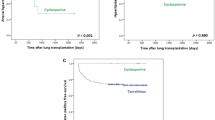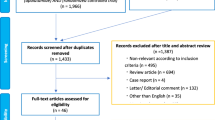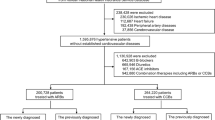Abstract
The application of pharmacogenomic information to diagnostic assays is expected to improve the prediction of drug efficacy and toxicity, leading to appropriate therapeutic regimens for individual patients. Cardiovascular events are common and severe adverse drug reactions (ADRs) among transplant patients treated with calcineurin inhibitors (CNIs). We conducted case-control association studies using 50,947 gene-based single-nucleotide polymorphisms (SNPs) to identify genetic variations that might be associated with cardiovascular risk factors in 72 renal transplant recipients with CNI therapy. The overall incidence of cardiovascular events was 13.9% (10/72) among patients receiving cyclosporine or tacrolimus; arrhythmias in six patients (8.3%), ischemic heart diseases in two patients (2.8%), and heart failure in two patients (2.8%). On the basis of results of the genome-wide association studies, we attempted to establish a scoring system to predict individual risks for cardiovascular toxicity of cyclosporine and tacrolimus. Estimation of the predictive performance was carried out by the use of internal leave-one-out cross-validation test. When we combined arrhythmia, ischemic heart disease and heart failure cases as subjects with a cardiotoxicity phenotype, nine of ten ADR patients and 50 of 62 non-ADR patients were correctly classified into the respective categories using the top eight SNPs. In addition, the proportion of individuals in the control population (n=246) with scores over the cut-off (11.0%) was close to the cardiovascular ADR frequency (8.3%) among renal transplant patients in the previous clinical study. Our results open the possibility that prediction of CNI-induced cardiovascular complications can lead to better prognosis and quality of life among kidney-transplant patients, and to improved immunosuppressive regimens.
Similar content being viewed by others
Log in or create a free account to read this content
Gain free access to this article, as well as selected content from this journal and more on nature.com
or
References
Agnoletti L, Curello S, Bachetti T, Malacarne F, Gaia G, Comini L, Volterrani M, Bonetti P, Parrinello G, Cadei M, Grigolato PG, Ferrari R (1999) Serum from patients with severe heart failure downregulates eNOS and is proapoptotic: role of tumor necrosis factor-alpha. Circulation 100:1983–1991
Caruso R, Perico N, Cattaneo D, Piccinini G, Bonazzola S, Remuzzi G, Gaspari F (2001) Whole-blood calcineurin activity is not predicted by cyclosporine blood concentration in renal transplant recipients. Clin Chem 47:1679–1687
Fichtlscherer S, Rossig L, Breuer S, Vasa M, Dimmeler S, Zeiher AM (2001) Tumor necrosis factor antagonism with etanercept improves systemic endothelial vasoreactivity in patients with advanced heart failure. Circulation 104:3023–3025
Haga H, Yamada R, Ohnishi Y, Nakamura Y, Tanaka T (2002) Gene-based SNP discovery as part of the Japanese Millennium Genome Project: identification of 190,562 genetic variations in the human genome. Single-nucleotide polymorphism. J Hum Genet 47:605–610
Haug C, Duell T, Lenich A, Kolb HJ, Grunert A (1995) Elevated plasma endothelin concentrations in cyclosporine-treated patients after bone marrow transplantation. Bone Marrow Transplant 16:191–194
Hebert SC, Mount DB, Gamba G (2004) Molecular physiology of cation-coupled Cl- cotransport: the SLC12 family. Pflugers Arch 447:580–593
Iida A, Sekine A, Saito S, Kitamura Y, Kitamoto T, Osawa S, Mishima C, Nakamura Y (2001) Catalog of 320 single nucleotide polymorphisms (SNPs) in 20 quinone oxidoreductase and sulfotransferase genes. J Hum Genet 46:225–240
Kahan BD, Grevel J (1988) Optimization of cyclosporine therapy in renal transplantation by a pharmacokinetic strategy. Transplantation 46:631–644
Kahan BD, Shaw LM, Holt D, Grevel J, Johnston A (1990) Consensus document: Hawk’s Cay meeting on therapeutic drug monitoring of cyclosporine. Clin Chem 36:1510–1516
Margreiter R; European Tacrolimus vs Ciclosporin Microemulsion Renal Transplantation Study Group (2002) Efficacy and safety of tacrolimus compared with cyclosporine microemulsion in renal transplantation: a randomised multicentre study. Lancet 359:741–746
Mayer AD, Dmitrewski J, Squifflet JP, Besse T, Grabensee B, Klein B, Eigler FW, Heemann U, Pichlmayr R, Behrend M, Vanrenterghem Y, Donck J, van Hooff J, Christiaans M, Morales JM, Andres A, Johnson RW, Short C, Buchholz B, Rehmert N, Land W, Schleibner S, Forsythe JL, Talbot D, Pohanka E, et al. (1997) Multicenter randomized trial comparing tacrolimus (FK506) and cyclosporine in the prevention of renal allograft rejection: a report of the European Tacrolimus Multicenter Renal Study Group. Transplantation 64:436–443
McCaffrey PG, Luo C, Kerppola TK, Jain J, Badalian TM, Ho AM, Burgeon E, Lane WS, Lambert JN, Curran T et al (1993) Isolation of the cyclosporine-sensitive T cell transcription factor NFATp. Science 262:750–754
Mount DB, Mercado A, Song L, Xu J, George AL Jr, Delpire E, Gamba G (1999) Cloning and characterization of KCC3 and KCC4, new members of the cation-chloride cotransporter gene family. J Biol Chem 274:16355–16362
Ohnishi Y, Tanaka T, Ozaki K, Yamada R, Suzuki H, Nakamura Y (2001) A high-throughput SNP typing system for genome-wide association studies. J Hum Genet 46:471–477
Pirsch JD, Miller J, Deierhoi MH, Vincenti F, Filo RS (1997) A comparison of tacrolimus (FK506) and cyclosporine for immunosuppression after cadaveric renal transplantation. FK506 Kidney Transplant Study Group. Transplantation 63:977–983
Seino Y, Hori M, Sonoda T (2003) Multicenter prospective investigation on cardiovascular adverse effects of tacrolimus in kidney transplantations. Cardiovasc Drugs Ther 17:141–149
Shaw JP, Utz PJ, Durand DB, Toole JJ, Emmel EA, Crabtree GR (1988) Identification of a putative regulator of early T cell activation genes. Science 241:202–205
Slowinski T, Subkowski T, Diehr P, Bachert D, Fritsche L, Neumayer HH, Hocher B (2002) Interaction of the endothelin system and calcineurin inhibitors after kidney transplantation. Clin Sci (Lond) 103(Suppl 48):396S–398S
Tsunoda T, Lathrop GM, Sekine A, Yamada R, Takahashi A, Ohnishi Y, Tanaka T, Nakamura Y (2004) Variation of gene-based SNPs and linkage disequilibrium patterns in the human genome. Hum Mol Genet 13:1623–1632
Weis M, Wildhirt SM, Schulze C, Pehlivanli S, Rieder G, Wolf WP, Wilbert-Lampen U, Meiser BM, Enders G, von Scheidt W (2000) Coronary vasomotor dysfunction in the cardiac allograft: impact of different immunosuppressive regimens. J Cardiovasc Pharmacol 36:776–784
Yan GX, Chen J, Yamada KA, Kleber AG, Corr PB (1996) Contribution of shrinkage of extracellular space to extracellular K+ accumulation in myocardial ischaemia of the rabbit. J Physiol 490:215–28
Acknowledgements
We thank the following: R. Ohishi for her excellent technical assistance; T. Yamazaki and K. Nakazono for their expertise in computer programming and statistical analyses; and all members of the SNP Research Center, The Institute of Physical and Chemical Research, for their contribution to the completion of our study.
Author information
Authors and Affiliations
Corresponding author
Rights and permissions
About this article
Cite this article
Mushiroda, T., Saito, S., Tanaka, Y. et al. A model of prediction system for adverse cardiovascular reactions by calcineurin inhibitors among patients with renal transplants using gene-based single-nucleotide polymorphisms. J Hum Genet 50, 442–447 (2005). https://doi.org/10.1007/s10038-005-0275-3
Received:
Accepted:
Published:
Issue date:
DOI: https://doi.org/10.1007/s10038-005-0275-3
Keywords
This article is cited by
-
Systems biology approaches to adverse drug effects: the example of cardio-oncology
Nature Reviews Clinical Oncology (2015)
-
Interactions between the adducin 2gene and antihypertensive drug therapies in determining blood pressure in people with hypertension
BMC Medical Genetics (2007)
-
Similarity of the allele frequency and linkage disequilibrium pattern of single nucleotide polymorphisms in drug-related gene loci between Thai and northern East Asian populations: implications for tagging SNP selection in Thais
Journal of Human Genetics (2006)



